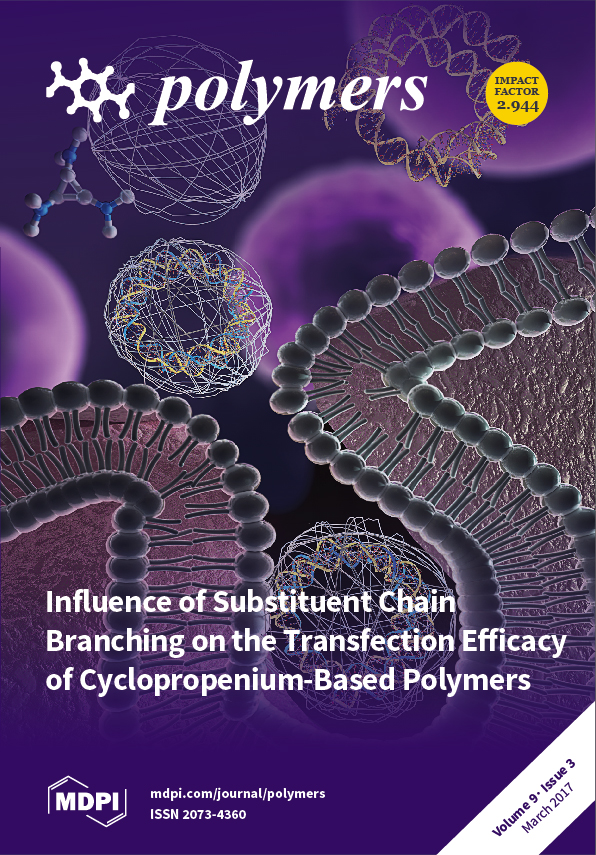Three dithienylpyrroles (1-(4-(methylthio)phenyl)-2,5-di(thiophen-2-yl)-pyrrole (MPS), 1-(4-methoxyphenyl)-2,5-di(thiophen-2-yl)-pyrrole (MPO), and 4-(2,5-di(thiophen-2-yl)-pyrrol-1-yl)benzonitrile (ANIL)) were synthesized and their corresponding polydithienylpyrroles (PSNS) were electrosynthesized using electrochemical polymerization. Spectroelectrochemical studies indicated that poly(1-(4-(methylthio)phenyl)-2,5-di(thiophen-2-yl)-pyrrole) (PMPS) film was green, dark green, and brown in the neutral, oxidation, and highly oxidized state, respectively.
[...] Read more.
Three dithienylpyrroles (1-(4-(methylthio)phenyl)-2,5-di(thiophen-2-yl)-pyrrole (MPS), 1-(4-methoxyphenyl)-2,5-di(thiophen-2-yl)-pyrrole (MPO), and 4-(2,5-di(thiophen-2-yl)-pyrrol-1-yl)benzonitrile (ANIL)) were synthesized and their corresponding polydithienylpyrroles (PSNS) were electrosynthesized using electrochemical polymerization. Spectroelectrochemical studies indicated that poly(1-(4-(methylthio)phenyl)-2,5-di(thiophen-2-yl)-pyrrole) (PMPS) film was green, dark green, and brown in the neutral, oxidation, and highly oxidized state, respectively. The incorporation of a MPS unit into the PSNS backbone gave rise to a darker color than those of the MPO and ANIL units in the highly oxidized state. The PMPS film showed higher Δ
Tmax (54.47% at 940 nm) than those of the PMPO (43.87% at 890 nm) and PANIL (44.63% at 950 nm) films in an ionic liquid solution. Electrochromic devices (ECDs) employing PMPS, PMPO, and PANIL as anodic layers and poly(3,4-(2,2-diethypropylenedioxy)thiophene)(PProDOT-Et
2) as a cathodic layer were constructed. PMPO/PProDOT-Et
2 ECD showed the highest ΔT
max (41.13%) and coloration efficiency (674.67 cm
2·C
−1) at 626 nm, whereas PMPS/PProDOT-Et
2 ECD displayed satisfactory ΔT
max (32.51%) and coloration efficiency (637.25 cm
2·C
−1) at 590 nm. Repeated cyclic voltammograms of PMPS/PProDOT-Et
2, PMPO/PProDOT-Et
2, and PANIL/PProDOT-Et
2 ECDs indicated that ECDs had satisfactory redox stability.
Full article






